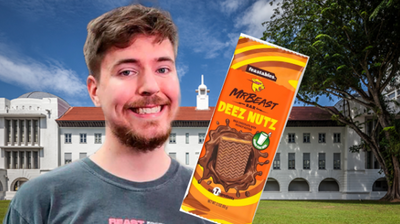Meat. A rare, four letter word which causes many to salivate.
A symbolic centerpiece of plenty, fine cuts of beef (think the not-so-recent hype over Wylarah) to the humble pig (such as Jamón Ibericó de Bellota) are opulent representatives of fine-dining. With wealthier populations and globalization complemented by favorable policies for cultivating livestock, the inevitable truth is that meat consumption has increased significantly over the last century. For almost every imaginable cuisine, meat features in some form or the other, often taking center piece as the highlight of the meal. It comes as no surprise that for any commercially astute business, meats are an obvious place to take a stab at disruption.
The hype with alternative meats was most recently captured by Beyond’s IPO on the New York Stock Exchange. With a share price increasing over 500% since its IPO in May, Beyond has garnered much attention. Made with protein derived from peas, Beyond works better (in my opinion) as a substitute for commercial patties. Served in Singapore at places such as Mezza 9 and Pizza Express, it’s also easy to purchase on e-commerce platforms such as RedMart.
Beyond this however, who are the other players shaking up the market? To name a few, Impossible, Quorn, and Omnipork are but one of many other players seeking to gain a foothold — and they’re not alone. Established players such as Tyson Foods and Nestlé are already ramping up production. Further, while traditionally prized cuts of meat are typically found in $ restaurants, alternative meats have quickly appeared in your lunchtime sandwich shop to Ramsay’s local kitchen. From Impossible to Beyond, consumers are increasingly spoilt for choice. This perhaps, ties in with the wave of health trends and an insatiable demand for all things low-fat, organic, gluten free and vegan.
The surprising thing however, is that this phenomenon is not all that new per se. I’d like to think of it in two waves. The first wave came with the mock meat beancurd toppings on vegetarian bee hoon and stir-fried gluten char siu. While tasty, these starch and gluten-heavy products were never marketed as being meat alternatives, but more of easily accessible meat substitutes. With this new wave, emphasis has been on simulating the texture, taste, and style of cooking, as authentic and original alternatives.

Take Impossible meats for example. For the most part, wheat, potato and soy protein are key components. To simulate the flecks of fat often found in minced meat, coconut oil has been added to provide the oily mouthfeel associated with meat, while also producing a satisfying sizzle when placed on the grill. Perhaps the length to which this second wave aims to capture and disrupt the meat market is best represented by the re-creation of heme. A naturally occurring component in blood, heme is responsible for giving meat that has been taken off the grill its reddish liquid.
Taking a bite out of my Impossible burger I was pleasantly surprised by the reddish-pink texture of this meat alternative which was similar to a patty of medium doneness. Texture wise, it had the same chewy and rough mouthfeel I would otherwise expect from a beef patty. For me however, it was the aroma of the grill and the distinct smell of iron that convinced me to bite on (to be more scientific, I ordered it once at Fatboys and another time at Coffee Academics, both of which yielded the same result). In the spirit of evidence and corroboration, I spoke briefly with Dinesh Kumar (NUS LLB Y3 Undergraduate) who had also sampled the Impossible burger. To him, the Impossible burger truly did the impossible — not only did he feel content, but the taste and texture was realistic enough to make him order it again.

To find out more about alternative meats and their application in our local restaurant industry, I sat down with none other than Yuan Oeij, Chairman of the Privé group. With a span of restaurants and nightlife venues under his belt, the group has been a first-mover in Singapore’s alternative meat space, and weaves in many of these options into its menus.
Meeting at Privé’s Paragon outlet, Yuan appeared with a congenial demeanour, donning a bright coloured tee and slacks. As someone on a plant-based diet, Yuan highlighted his journey as largely intrinsic, touching also on the externalities of meat consumption and the need to consume less meat as part of our natural diets. For a restauranteur who used to run a nose to tail restaurant serving all parts of the animal, that Yuan “walks the walk” in both his personal life and his business speaks volumes.

Q1: Between the different meat alternative options, what were the pull and push factors in deciding which to use in your different restaurants?
A1: Well, I was adventurous, and I recognised alternative meats for what it was. To be clear, the Privé group is not tied to any particular brand, but works with what is best suited for each of our restaurants. With Impossible, I found it to be a very flexible meat alternative with many meat-like qualities. After launching this product in our Privé outlets, we noticed a spike in the number of Impossible Burgers ordered, reflecting consumer reception towards this alternative product. Even at Privé’s Empress (a Michelin guide Distinction restaurant), Impossible’s beef-like texture makes it a good candidate. For example, we feature Impossible in our vegetarian hotpot rendition of mapo tofu. At the same time, we also incorporate other alternative meats such as Omnipork. This is served in dim sum dishes and other signature renditions, such as our stir-fried French beans with Omnipork and Shimeji mushrooms. For Beyond, I find it a bit more challenging for Chinese cuisine or anything beyond (pun-intended) burgers as it has a char-smoked flavor to it. At the end of the day, it is still necessary to keep in mind that these are essentially a variant of mock meats. Unlike traditional mock meats however, products such as Beyond and Impossible have managed to better replicate the taste and texture of meat, and are also bolstered by good marketing.
Q2: Earlier, you touched on Impossible and Beyond as a sort of second wave of mock meats. How then, are they different from traditional forms of mock meat?
A2: These products are trying to be healthier, meaning cleaner content and a range of gluten free options. This is in contrast to traditional mock meats that are often made of gluten and contain a lot more additives.
Q3: Some chefs have come out to say they’re not comfortable using alternative meats, as they still view them as processed products. Do you think this perception will change?
A3: I think that perception will continue. My personal view however, is that commercially farmed meat in general is harmful, and that most meats are laden with concentrated toxins, antibiotics and growth hormones anyway. With alternative meats, what we’re talking about here is plant-processed. I’d like to think then that at the very worse, these plant-based meat alternatives are no healthier than commercially cultivated meat. If I were to make a guess, you’d probably suffer more in the long-run eating meat over plant-based alternatives. What I think is a necessary takeaway is to not consume meat alternatives as if they are healthy. Eat it as a treat, which is how consumers should be approaching regular meat as well.
Q4: In the long-run, are your looking to embrace more meat alternatives in your restaurants?
A4: I think we are going to embrace more meat alternatives. Whether we look at this as a business strategy or an environmental issue, we recognise that most customers still prefer their food punchy and tasty. To address this, I aim to include a good proportion of natural, plant-based dishes in our existing menu that do not require meat alternatives at all. In general, I’m also pushing for things to be healthier. Take my chickpea masala biryani for example, which is vegan. By the end of this week, we will also replace our basmati with brown basmati. Further, our nasi goreng is going to use brown rice as well. I don’t think customers will notice a difference in terms of taste, but it is a slow transition to make the whole line-up healthier, yet appealing. Another way in which meat alternatives are useful is in the way they integrate as substitutes for existing dishes. Think of my chicken rice dish for example, where I can take Quorn (made from mycoprotein) and offer it alongside regular chicken breast. This allows me to create dishes that appeal to a range of customers.
Q5: From a business perspective, how sustainable is this approach of offering so much choice to your customers?
A5: To me, the policy is not to penalise people who make the right choices. For example, we removed the premium on milk alternatives such as oat and soy milk. Even though it costs us more than regular milk to supply this at no extra cost, I find that this helps us to do our part in addressing environmental externalities from the dairy industry, while also catering to the different needs of our customers. With Impossible and Beyond, these are actually more expensive products. To profit, I would have to sell my Impossible Burger at $25, but I sell it at $21, so there is a level of subsidy involved. Recent statistics from my restaurants show that meat alternatives amount to 40-70% of my total burger sales. While there may be some fall back after the hype dies down, I do think it is a sustainable upward trend. Frankly, I’d say the same for the Beyond share price!
Another reason for the higher price for Impossible and Beyond is that volume is low and that production takes place in the US. However, I foresee prices coming down, as they seek to expand and move production to other parts of the world. I think it will be a matter of time before the price of alternative meat catches up with that of the heavily subsidized meat industry.
Verdict:
Like it or not, alternative meats are here to stay. Coupled with this paradigm shift to how and what we eat, is also the added aspect of an environmental benefit. Perhaps, this best represents what I’d like to term, “one small bite for a man, one giant leap for mankind.”
Acknowledgements:
*Justified would like to thank Mr. Yuan Oeij for extending his time to the author in granting this exclusive interview.
*All opinions (unless otherwise stated) and images are of that of the author. This was not a sponsored review.






